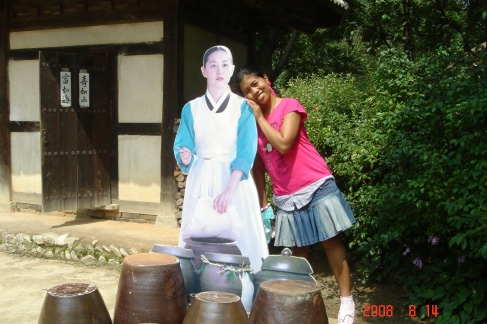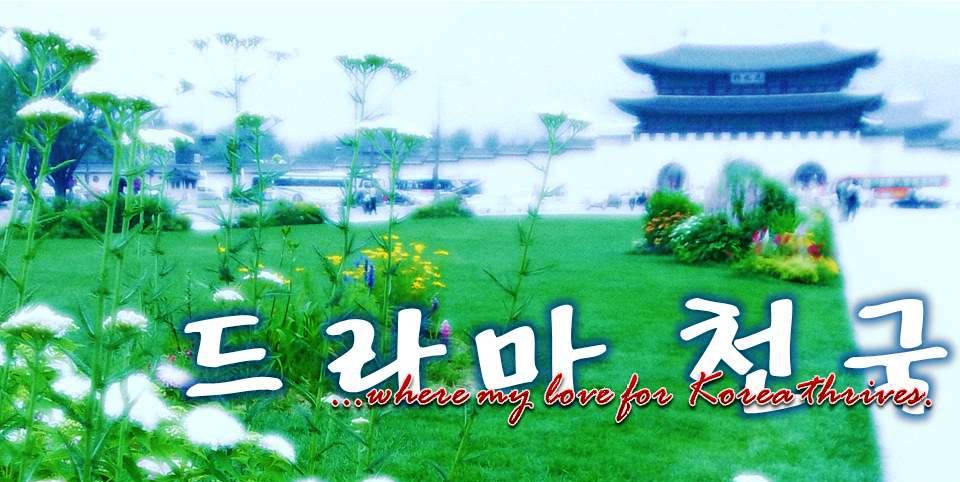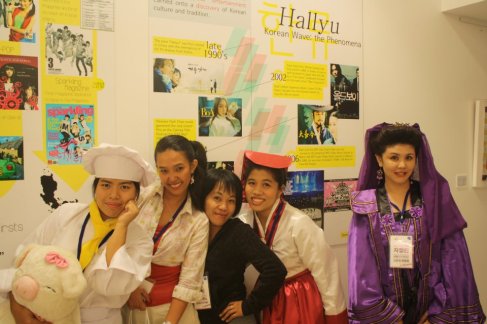Tags
influence of Koreanovelas, Korea, Korean drama society in the Philippines, Koreanovelas, Why Filipinos like Koreanovelas, Why Filipinos love Koreanovelas
Ten years ago, all East Asians in my country looked the same to me. Several years before that, I despised Kimchi, which I mistook as a kind of main dish included in a wide selection of foreign delicacies. When ‘Autumn in my Heart’ first aired on local TV, I thought it was just another tearjerker series from China. Korea, back then, was all but a geographical location to me, a country similar to America because it had a North and a South.

Me and Jang Geum in Minsukchon, Yongin, Korea
It took me a 54-episode Korean TV drama series, fondly referred to as ‘Koreanovela’ in the Philippines, to take a second look at this country. Dae Jang Geum, first aired in the Philippines in 2005, and to me it was both a magnet pulling curiosity to Korea’s culture and a story inspiring the underprivileged. It was the first Korean drama I watched and my first window towards understanding Korea beyond its name. Seven years have passed and I never imagined being deeply attached to this country and its culture through something I thought would just be a regular pastime.
Koreanovelas. Koreans. Korea. They are all part of my daily life now – from my Korean mobile phone that wakes me up everyday up to the Korean facial wash I use before retiring for the night. Once I tried detaching from any Korean-related thing, but I realized that it was close to impossible. With a tongue being used to mixing Korean with my native language, fingers automatically typing Korean websites and a stomach craving for ramyeon and kimchi (yes, now, I got very accustomed to it being a yummy side dish), I just knew that Korea has been deeply imbibed in my system.
This tale is not mine alone. I hear (and read) the same story from hundreds of Filipinos (and other nationalities) drawn to Korea and its culture through Koreanovelas. Not too long ago, a TV reporter discussing Hallyu or Korean Wave in the Philippines asked me: “What makes Korean dramas so attractive to Filipinos?” While many would mention the strong appeal of good-looking actors, the fast-paced plots and breathtaking sceneries, I gave a different response. Although an exciting plot and stunning visuals keep the audiences’ eyes glued on the screen, it is the core of the story and the values radiating from the characters that touch Filipino hearts and make them want some more. No matter how diverse the cultural landscape may be, a viewer can relate because the story is not foreign to him. Dae Jang Geum, Jumong, Queen Seon Deok and Dong Yi, all of which are historical and long dramas, have many Filipino ‘followers’ basically because the story of the main character is also, somehow, their story. Struggling with financial, family and other social issues, Filipino viewers identify with the journey of a character from the foot of a mountainous challenge towards the peak of success. Full House, My Girl, My Name is Kim Sam Soon, Autumn in My Heart and Only You, all contextualized and transformed into Filipino versions, gave viewers the thrill of falling in love with a wealthy bachelor— something that many average Filipino female viewers would wish for in real life.
Stepping into the Korean Drama Land may seem like entering a sort of a Fantasy World, but for fans like me, we find a piece of reality in that magical space. I met Suh Jang Geum in 2005 after a big time failure and found Shin Mi Rae (City Hall) in 2009 while I was wallowing in depression. Both characters stirred me to rise above my seemingly hopeless situation. Many Filipinos like me step into a story and come out of the media tunnel with a new sense of courage to face another challenge in life. Fans all over the world meet at online drama forums/cafes to share our comments on Korean dramas as well as our own dreams and aspirations. Korean dramas have such a power to connect lives from one end of the spectrum to another. It provides a bridge of understanding which transcends diverse cultures and personalities. Whether it is the glowing face of the lead character or an emotion-sweeping dialogue, Koreanovela fans find more reasons to smile.
This is the kind of influence that a Korean drama may bring to its million viewers across the globe. Beyond the wealth of cultural information, Koreanovelas introduce fans like me into Korea’s artistic craft and diligence. While in the Philippines we often see stories drafted to fit the qualities of celebrities dominating the prime time TV, Korean producers put prominence into a good and worthy plot. They make the story appeal to its audience by finding artists that would fit most to their drama sketches. We see a wide range of variety in Korean artists who invest a lot into training and improving themselves. Most Korean drama reviewers admire scriptwriters who are able to create a kind of uniqueness into a seemingly cliché story. I, myself, have been wondering, “Where on earth do those writers find such mind-blowing lines distinct to every script?”
While all good things never last, members of the foreign fan community whisper to what we refer to as ‘Korean drama gods and the powers that be’: “Please don’t run out of creative juices to weave another lovely story. Despite the many production issues that you have to go through, please remember that there are many hungry souls waiting for your episodes. There are countless foreigners awaiting your culture’s introduction and a million lives hoping for your touch.”
And in the case of my nation, we hope one day you hear the wailing cry of Filipino fans hoping to meet and learn from Korean actors, directors and scriptwriters, whom we greatly treasure in the depths of our hearts.
xxx
This was a commissioned article intended to be published in a Korean daily, but since there’s no news of publication, I’m posting it here to commemorate the day I’m reviving this blog. Yehey!


That Mishil-cosplaying girl resembles the real one. *creepy*
I’ve been encouraged to take part of the korean world when I was hooked by kpop songs and korean drama series. And now I think I’m loving it 🙂